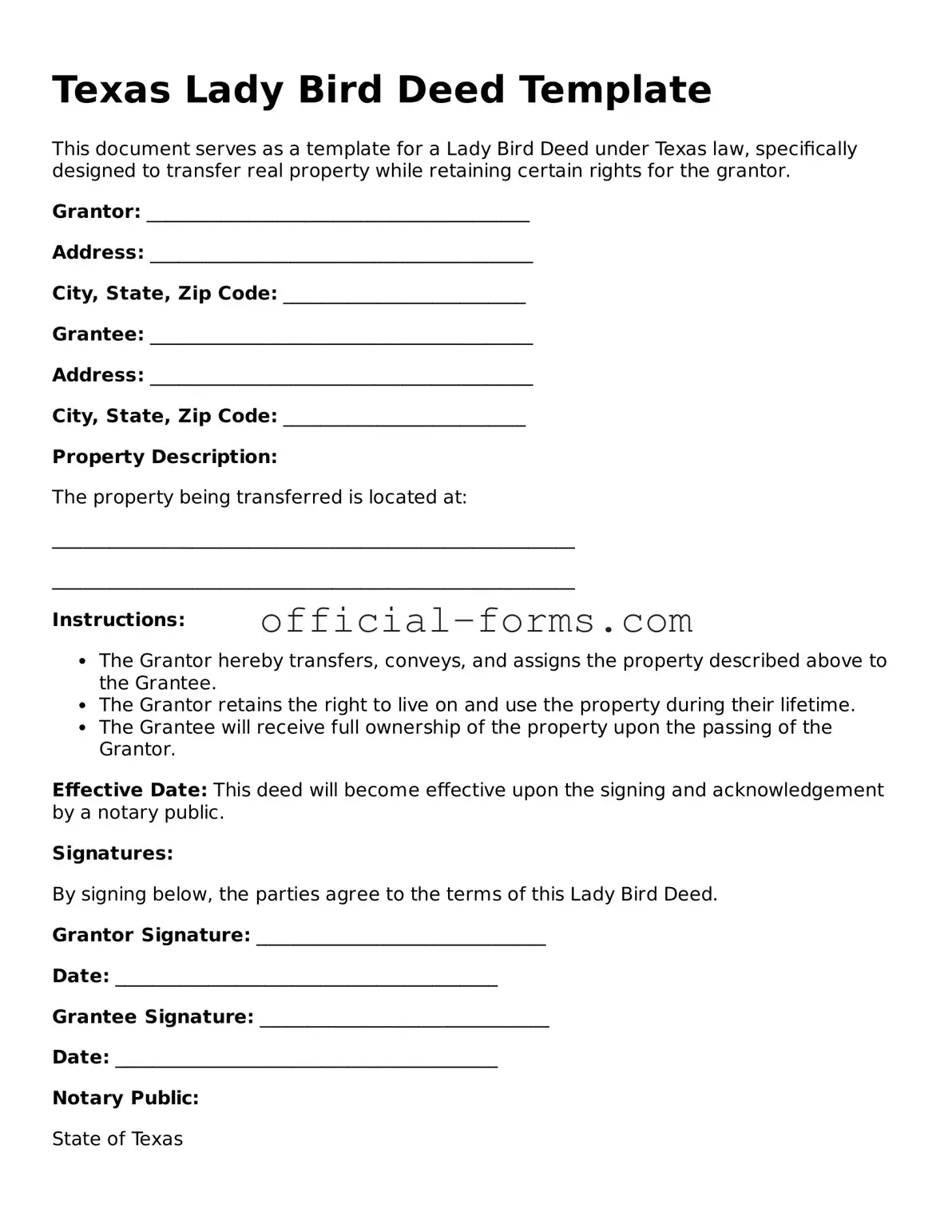When filling out the Texas Lady Bird Deed form, many individuals overlook crucial details that can lead to complications down the line. One common mistake is failing to include all property owners. If multiple people own the property, it’s essential to list everyone involved. Omitting a co-owner can create legal disputes or complicate the transfer of property upon death.
Another frequent error is not clearly defining the beneficiaries. The Lady Bird Deed allows you to name one or more beneficiaries who will inherit the property. If this section is left vague or incomplete, it can lead to confusion about who is entitled to the property after the owner passes away.
Some people also neglect to sign the document in front of a notary public. A signature without notarization may render the deed invalid. This step is crucial because it verifies the identity of the signer and ensures that the document is executed properly.
Additionally, individuals sometimes forget to provide a legal description of the property. Instead of just using the address, the deed should include a precise legal description. This description helps to avoid any ambiguity regarding which property is being transferred.
Many also fail to understand the implications of retaining a life estate. While the Lady Bird Deed allows the owner to maintain control over the property during their lifetime, it’s important to be clear about what that means. Misunderstanding this can lead to unintended consequences regarding property rights and management.
Another mistake involves not considering tax implications. Some individuals overlook how the transfer of property may affect taxes for both the current owner and the beneficiaries. Consulting a tax professional can provide valuable insights into potential financial impacts.
Lastly, people sometimes forget to keep a copy of the completed deed in a safe place. After the form is filled out and filed, it’s vital to have a copy for personal records. This ensures that everyone involved is aware of the terms and conditions outlined in the deed, reducing the risk of disputes in the future.
